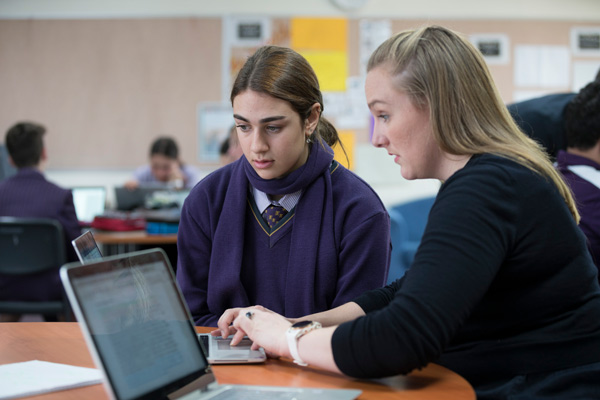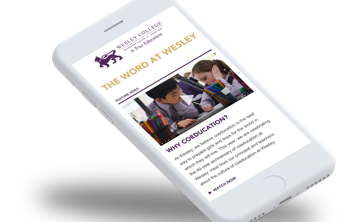
Feedback is fundamental to our approach to continuous improvement in our teaching and the learning progress of the students entrusted to our care, as Morag Howard explains.
Strong empirical evidence indicates the importance of feedback and the learning that is made possible when high-quality feedback is shared between teacher and student – and the student’s parent. John Hattie and Helen Timperley, in their 2007 research to determine the factors that are most effective in improving student learning, found that effective feedback can almost double the learning growth of a student in a year.
Feedback is evidently important, but what is it exactly? Every one of us has received feedback: welcome and unwelcome, positive and negative, constructive and destructive, often judgemental and frequently unhelpful. In education, however, feedback has a more specific meaning and purpose; it is evidence-based information about a student’s current performance in relation to a set of defined learning goals and is intended to effect reciprocal changes in student and teacher behaviours that can help drive student’s progress towards learning goals and identify future goals.
Everyday activities in the classroom, including formative and summative assessment tasks, provide opportunities for our teachers to gather information about students and their learning progress. This then informs the feedback given to students with regard to where they are now in their learning progress, where they should be next week and into the future, and what explicitly they need to be doing to get there. The model of effective feedback developed by Hattie and Timperley suggests the three key questions that feedback answers for students are: where am I going; how am I going; and where to next? In answering these questions, teachers are constantly reflecting on the impact of their teaching practices on student achievement and adapting their teaching strategies and activities to provide the necessary scaffolding to move students forward.
So where, when and how might you expect your child to receive feedback? If you were to walk through the school at any time on any day, you would see evidence of students being provided with feedback everywhere. This may be a primary teacher crouching beside one of our youngest learners discussing which adjectives they might include in their sentence to make it more descriptive, or a Year 12 student on a sofa in the Senior School corridor with their teacher beside them, essay and pen in hand, explicitly discussing what critical thinking looks like in the context of the current task.
Feedback might be verbal, one to one, or for a small group or even a whole class where appropriate, or in written form as comments on a student’s completed task. Student reports and portfolios provide a plethora of feedback and WiSE increasingly features feedback. Student-led conferences in the Junior School and student review meetings for students in Years 5 and 6, and Years 7 to 12 are also wonderful opportunities for teachers to provide feedback to students and families.
Regardless of the form it takes, the most effective feedback empowers students to take an active role in their learning. It encourages them to continue to ask questions until they fully understand what they need to know and do in order to meet current and future learning goals. And it enables them to plot and plan, pursue or discard and then revisit all the different ways in which they may shift their performance to meet these goals with the support and guidance of their teachers.
Morag Howard is the Deputy Head of the St Kilda Road Campus
